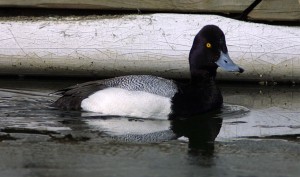While there are many variables in migration but an abundance of snow will always move ducks and geese south. Snow accumulation from western Montana to Wisconsin has finally blanketed the upper third of the flyway and forced ducks and geese south. The concentration of mallards in South Dakota has begun to move south along with mid-continental light geese. Mallard numbers are on the rise from Nebraska to central Illinois, Missouri and Arkansas, with Canada goose numbers ramping up in areas just below the snowline.
Hello folks, and, as always, welcome to Waterfowler.com.
As the Weather Channel embarks on a new marketing ploy to name winter storms, as NOAA has done with tropical storms, we weren’t sure whether to roll our eyes, giggle or sigh at the announcement.
With American media entrenched in it’s love of conflict, drama and hyper-sensationalism, we are thankful that duck and goose hunting offers an escape from every news headline that is accompanied by a flashing alert, and low-budget reality television show that has somehow been deemed quality entertainment.
Now before you immediately assume we’re dropping obscure hints about Phil and Willy’s Duck Dynasty, let us publicly state we think it’s great they are laughing all the way to the bank and keeping their audience entertained in the process. Why shouldn’t their ingenuity and ability to exploit the network love affair with staged-reality be rewarded? Phil’s gets a national stage for his spiritual message. Willy gets the best value in marketing for the call corporation and duck hunting gets a nice evangelistic piece to aid in hunter recruitment. Everybody seems to win.
Does this make this entire rant a hypocritical statement? No. We still believe that when you turn a camera on somebody they become an actor — no matter what the circumstance. From moonshiners that don’t get arrested to gun-toting Amish that drive fancy cars and use cell phones, we simply think naming a winter storm has very little intrinsic value – unless of course they were named after the ducks they moved. Well, maybe that’s a bit hypocritical. Maybe we should just give in and name our own duck storms for publicity purposes? Yeah, maybe. Just maybe.
Please join us as we bring you the latest migration update from winter storm “Anas Platyrhynchos” (we started with “A” too) as it finally kicks a bunch of mallards off their first stomping grounds in the northern portions of the United States.
PACIFIC FLYWAY:
Colder temperatures in the north continue to keep the migration in motion throughout the flyway. Snow in Idaho and western Montana has pushed additional flights of big ducks south and hunting from the Sacramento Valley to the Great Salt Lake continues to improve. Hunting pressure has fueled a light but steady flow of waterfowl to the southern most end of the flyway where the daily bag continues to offer a variety of larger ducks, including mallards, gadwall, widgeon and pintail.
CENTRAL FLYWAY:
Snowfall in the Dakotas has finally provided incentive for the northern mallard population to get it in gear and travel south into states where the duck season remains open. Mallard numbers have improved significantly in states just below the snowline – with hunter success improving in dramatically in Nebraska over the past few days. As colder temperatures dip south, early migrants will continue to move to areas with an abundance of open water, away from icy conditions. New ducks are expected through the southern half of the flyway over the next week.
MISSISSIPPI FLYWAY:
With Snow blanketing Minnesota and Wisconsin, Canada Goose activity has peaked along the edge of the snowline in the northern portion of the flyway along with mallard numbers. Light goose numbers continue to increase on their southernmost stomping grounds – and an indicator that larger ducks will follow shortly. Hunter success has increased from Missouri to southern Indiana as ducks continue to move with freezing temperatures in the north.
ATLANTIC FLYWAY:
Duck activity in the northern half of the flyway is expected to increase as the current winter storm system moves east. With more rain expected than snow, it is unlikely the storm will fuel a heavy migration. Hunter success is expected to increase as colder temperatures increase feeding activity. Mallard and black duck numbers have increased over the past week from New York to the Chesapeake Bay. Sea duck numbers are increasing New Jersey to North Carolina – where sea ducks numbers are average fro this time of year. In the far southern portion of the flyway, Ringed neck ducks, wood ducks and teal continue to provide the best activity with all other species low.
Photo Credit: (c) 2002 Steve Davis






